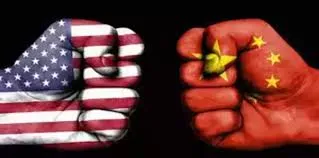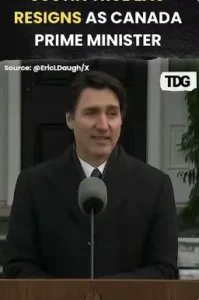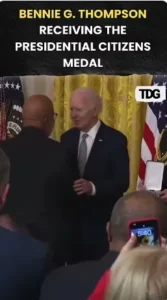The economic war of the century has begun—not with bombs or warships, but with spreadsheets, tariffs, and technology bans. And India may soon find itself in the blast radius.
In a stunning geopolitical move that sent shockwaves across boardrooms from Detroit to Shenzhen, the United States in early 2024 slapped an unprecedented 125% tariff on Chinese electric vehicles (EVs). The official rationale? National security. The real motive? A dramatic acceleration of a covert economic war between the world’s two largest economies—one that could permanently fracture the global economy.
As the U.S. escalates this high-tech showdown to contain China’s rise, the chaos it unleashes is now bleeding into global markets, dismantling alliances, and shattering long-held economic assumptions. And in the eye of this storm stands India—ambitious, rising, and uniquely vulnerable.
Tariff Heard Around the World
The Biden administration’s 125% tariff wasn’t a trade policy—it was a message wrapped in steel. With China’s EV exports surging and its dominance in battery tech solidifying, Washington decided it had seen enough. The U.S. move was a blunt-force policy weapon, aimed at decoupling American consumers from Chinese technology and halting China’s growing global influence in clean tech.
But what Washington framed as “protecting American jobs” is really the economic equivalent of an arms race. Beijing’s response? Aggressive hints at retaliatory bans on rare earths, pricing warfare in key commodities, and diplomatic snubs at Western forums. Welcome to the new battlefield: one fought not with tanks, but with algorithms, lithium, and leverage.
India: The Middle Child Caught in
the Crossfire
For India, this is both an opportunity and a nightmare. On paper, the West’s pivot away from China creates space for India to become the next big manufacturing destination. But reality is never that simple.
India imports over 70% of its lithium-ion cells and modules from China. Its pharmaceutical industry—projected to be a $130 billion sector by 2030—relies on Chinese APIs. Its EV push is being fueled (ironically) by Chinese tech. So when Washington says, “Cut ties with China,” it isn’t just advice—it’s an economic ultimatum with sharp consequences.
Indian companies are already facing scrutiny from U.S. regulators. Any indirect association with Chinese supply chains is being flagged in background checks, compliance audits, and investment clearances. A whisper of “Made in China” is becoming a red flag in global corridors of power.
Worse still, India risks being pulled into a compliance web: one where doing business with either superpower means violating the rules of the other.
The Economic Dominoes
Falling Fast
Let’s connect the dots. If China retaliates by limiting exports of critical minerals—such as graphite, cobalt, or gallium—India’s semiconductor dreams could collapse before takeoff. This isn’t hypothetical: in October 2023, China already imposed curbs on graphite, and it controls over 90% of global refining capacity.
India’s EV industry, expected to be a $200 billion opportunity by 2030, could be smothered under battery price shocks and sourcing chaos. Startups may collapse. Foreign investors, already jittery from global interest rate hikes, could begin to exit the Indian market. The rupee could slip, the bond market could tighten, and India’s inflation—already sticky—could spike again.
Meanwhile, FIIs are watching the chaos closely. One prolonged retaliatory move by China or a new round of U.S. sanctions, and capital flight could accelerate. Add a spike in crude oil (with India importing 85% of its needs), and a 1991-style BoP shock scenario isn’t far-fetched.
The Digital
Battlefield: Tech Iron Curtain of US
“India must avoid becoming collateral damage in a war it didn’t start—but is being asked to finish.”— Dr. Ojha’s warning to Indian policymakers
The war isn’t just over cars and minerals. The real contest is over control of the digital universe. The U.S. is pushing global tech standards that enshrine its dominance in AI, cloud computing, and semiconductors. Meanwhile, China is building an alternative ecosystem—autonomous, sovereign, and aggressively competitive.
India, with its Digital Public Infrastructure (DPI) success story, is being courted by both. Washington wants India to sign onto AI alignment frameworks. China, through BRICS+, is offering sovereign digital models and yuan-based e-currencies.
Choosing sides here is choosing the future of Indian technology—and its access to capital, AI chips, and digital platforms. Refuse U.S. alignment, and India may face a squeeze on cutting-edge technologies. Align with it, and China could retaliate economically—or worse, escalate on the border.
Forecast: Global Recession, Asian Realignment, Indian Instability
Here’s the near-term outlook from the frontline of the economic war:
• Global recession by mid-2026 driven by fractured supply chains, slower capital formation, and retaliatory trade practices.
• EV price inflation of 25–30% across Asia, squeezing India’s green transition ambitions.
• Capital outflow of $15–20 billion from Indian equities and bonds, mostly from tech, green energy, and fintech sectors.
• Severe inflation in electronics and solar module pricing, hitting India’s PLI (Production-Linked Incentive) schemes hard.
• Strategic tech divergence—India being forced to split AI, semiconductor, and telecom ecosystems between U.S. and BRICS-aligned protocols.
• Military tension spillover, with skirmishes on the LAC possible as Beijing uses hybrid escalation to test India’s alignment.
The Silent Costs: Jobs, Innovation, Sovereignty
This economic war isn’t being fought on Indian streets—but its impact will be felt in small factories in Pune, IT labs in Bengaluru, and EV showrooms in Noida. The job losses, the inflation, and the disrupted startups will speak of a global rivalry India didn’t ask for—but one it must now survive.
What’s worse, the sovereignty trap is deepening. India risks ceding digital independence by being forced to adopt external governance standards. Whether it’s cloud data, AI regulation, or chip design protocols, India is being boxed into foreign frameworks that may benefit superpowers more than sovereign economies.
The Strategic Playbook India Needs Now
India must not just react to this chaos—it must strategize for asymmetric advantage. The current war is less about winning and more about surviving without bleeding out. A few urgent steps could determine whether India rises from this crucible—or crumbles:
1. Decouple Critical Dependencies: Fast-track local production of APIs, semiconductors, batteries, and defense gear.
2. Geopolitical Hedging: Continue strategic autonomy—refuse to become a vassal to either Washington or Beijing.
3. Digital Non-Alignment 2.0: Champion an indigenous digital governance model rooted in constitutional and ethical values.
4. Shockproof the Financial System: Boost forex reserves, diversify trade, and strengthen currency hedging frameworks.
5. Create a Dual-Track EV Ecosystem: One aligned with the West for high-end exports, another cost-effective for domestic needs.
War Has Changed—And India Must Change Too
The global economy is no longer driven by competition—it is driven by containment, confrontation, and coercion. The 125% U.S. tariff on Chinese EVs may one day be seen as the economic assassination that triggered the downfall of globalization.
India’s position as the world’s most populous democracy, a tech powerhouse, and a rising geopolitical actor gives it leverage. But in war—especially economic war—neutrality is not safety. It is a target.
The choices India makes today—on supply chains, tech partnerships, and foreign policy—will determine whether it becomes the bridge between global power centers or the battleground they fight over.
The war has begun. It’s invisible. It’s relentless. And it’s coming for your economy next.
Dr. Nishakant is a distinguished international expert in foreign diplomacy and counter-terrorism, with a specialized focus on strategic policy formulation.























